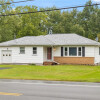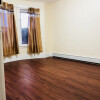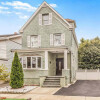Living in the district / neighbourhood Jamaica Estates in New York
About the district / neighbourhood Jamaica Estates in New York
Jamaica Estates, located in eastern Queens, New York, is a quiet, affluent residential neighborhood known for its large homes, tree-lined streets, and suburban feel. Bordered by Union Turnpike to the south, Hillside Avenue to the north, and 188th Street to the west, Jamaica Estates provides a peaceful retreat within New York City, attracting professionals and families who seek a more tranquil atmosphere. Its distinctive architecture and proximity to the bustling commercial areas of Jamaica make it a unique part of Queens. History of Jamaica Estates
Jamaica Estates was developed in the early 20th century by the Jamaica Estates Company, which purchased land from the wealthy Brinckerhoff family. The company envisioned a suburban oasis within New York City, featuring wide streets, green spaces, and luxurious homes designed in various architectural styles, including Tudor, Colonial, and Mediterranean. The area was carefully planned with zoning regulations to preserve its residential character and prevent commercial overdevelopment.
In the 1920s and 1930s, Jamaica Estates became a popular neighborhood for middle- and upper-middle-class residents looking to escape the denser parts of Queens and Manhattan. Today, it remains a sought-after enclave, known for its quiet atmosphere and spacious homes. Landmarks and Points of Interest
Immaculate Conception Church: One of the most prominent landmarks in Jamaica Estates is the Immaculate Conception Church, located on Midland Parkway. This Roman Catholic church, with its stunning Gothic Revival architecture, has been a central part of the neighborhood since its construction in the 1920s. Its soaring spires and intricate stained-glass windows make it a striking feature of the community, and the church continues to serve as a spiritual and social hub for local residents.
Captain Tilly Park: Captain Tilly Park, located near Hillside Avenue and 169th Street, is one of the neighborhood's most beloved green spaces. This small but picturesque park is centered around Kissena Creek and Oakland Lake, offering a serene environment for residents to enjoy nature. The park is named after George Tilly, a local soldier who died in the Spanish-American War. With its playgrounds, walking paths, and open lawns, Captain Tilly Park is a favorite spot for families and locals looking to escape the city's hustle and bustle.
King Manor Museum (nearby): Just outside Jamaica Estates, in the heart of nearby Jamaica, is the King Manor Museum, a historical landmark dedicated to preserving the legacy of Rufus King, one of the framers of the U.S. Constitution and a prominent abolitionist. The museum is housed in King’s former home, a grand Federal-style mansion built in the early 19th century. Visitors can tour the house and learn about King’s life, his role in shaping American politics, and the history of early Queens. While not directly in Jamaica Estates, it’s a nearby cultural destination that reflects the area’s rich historical significance.
F Train (179th Street – Jamaica Station): The 179th Street – Jamaica Station, located on Hillside Avenue at the western edge of Jamaica Estates, is an important transportation hub for the neighborhood. As the final stop on the F train line, it provides residents with easy access to Manhattan and other parts of Queens, making the area highly accessible while still maintaining its suburban feel. The station is a key feature of Jamaica Estates, connecting it to the broader New York City transit system.
The Trump Family Home: One of the more well-known homes in Jamaica Estates is the Trump family house at 85-15 Wareham Place. This stately, red-brick Tudor-style home was the childhood residence of former U.S. President Donald Trump, who grew up in the neighborhood during the 1940s and 1950s. While the home is privately owned, its association with the Trump family has made it a point of interest for some visitors to the area.
Jamaica Estates Historic District (Proposed): Jamaica Estates has long been recognized for its distinctive architecture and historical significance. While the neighborhood is not officially designated as a historic district, there have been discussions and efforts by local preservation groups to protect the architectural integrity of the area’s homes. The variety of early 20th-century styles and the planned nature of the development give Jamaica Estates a unique character compared to other parts of Queens.
Cultural and Community Life
Jamaica Estates has a close-knit, diverse community, with a large population of families, professionals, and retirees. Over the years, the neighborhood has attracted residents from various cultural backgrounds, including South Asians, Eastern Europeans, and Latin Americans, contributing to the area’s multicultural identity. This diversity is reflected in local restaurants, shops, and cultural events.
The neighborhood’s peaceful atmosphere, coupled with its well-maintained homes and streets, makes Jamaica Estates a desirable place to live for those seeking a suburban lifestyle within New York City. Conclusion
Jamaica Estates stands out in New York City for its suburban charm, historic homes, and serene green spaces. Landmarks such as Immaculate Conception Church, Captain Tilly Park, and the King Manor Museum (nearby) highlight the area’s historical and cultural significance. With its tree-lined streets, stately homes, and easy access to the rest of the city via the F train, Jamaica Estates offers a unique and tranquil residential experience within the bustling borough of Queens.













